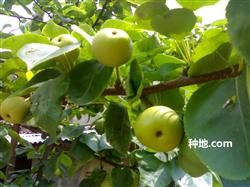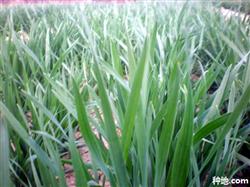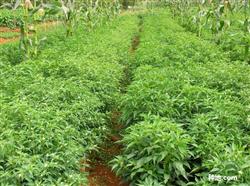What can be done to improve nitrogen use efficiency?

What can be done to improve nitrogen use efficiency? Please guide and introduce that the effective utilization rate of nitrogen fertilizer in China is generally very low. How to reduce nitrogen loss and improve nitrogen use efficiency is a common concern of the majority of farmers. Here, seven methods to improve the effective use efficiency of nitrogen fertilizer are introduced to the broad masses of farmers. One is to implement mixed application, deep application and strengthen water management. The results of a large number of field experiments show that compared with the surface application of nitrogen fertilizer, the mixed application of nitrogen fertilizer in the soil plough layer, or a few centimeters below the soil surface, can reduce nitrogen loss. The effect of deep application of nitrogen fertilizer into grain fertilizer of a few millimeters or about 1 cm is better. The rice field experiment showed that the deep application of grain fertilizer reached the same yield level as the surface application of powder fertilizer, but the amount of nitrogen fertilizer could be reduced by about 1. 3%. However, deep application should be used cautiously in areas with high rainfall, light soil texture and possible leaching loss. Both mixed and deep application can reduce the loss of ammonia volatilization and denitrification. Suitable water management can also improve the yield-increasing effect of nitrogen fertilizer. For example, the application of base fertilizer in paddy field is mostly mixed with water layer, the effect of this mixed application is very poor, most of the nitrogen remains in the surface water, and only a small part of the nitrogen mixed into the soil. By using the method of mixed application of nitrogen fertilizer and then irrigation in the absence of water layer, more nitrogen can be mixed into the soil, thus reducing nitrogen loss. In addition, the method of carrying nitrogen with water is also one of the measures to reduce nitrogen loss. Second, the selection of slow-acting (long-acting) fertilizer is to wrap a thin film on the surface of granular nitrogen fertilizer, so that its soluble nitrogen is gradually released for crop absorption and utilization, reducing nitrogen loss and biological fixation. The application of slow-acting fertilizer can reduce nitrogen loss to some extent, but because of its high price, it is mainly applied to cash crops. Third, select the best fertilization period according to the characteristics of crop nitrogen requirement in order to make the crop high yield, otherwise it will lead to high nitrogen content of straw, high empty grain rate and low grain yield of cereal crops. For crops with a longer growing period, in addition to applying base fertilizer, nitrogen fertilizer should be applied one to several times according to the characteristics of crop nitrogen demand, in order to meet the needs of crops and obtain high yield. Fourth, due to the application of soil texture, the content of soil texture and organic matter have influence on the application of nitrogen fertilizer. It is generally believed that sandy soil has the advantages of fast organic matter mineralization, poor fertilizer conservation and less application, while clayey soil organic matter mineralization is slow, and the nitrogen fertilizer applied is easy to be fixed by soil colloid and microorganisms. on the other hand, the loam soil has good fertilizer supply and fertilizer conservation performance, and the fertilization method can be determined according to the plant growth period. Fifth, due to the application of different kinds of crops, the demand and types of nitrogen fertilizer are different. For example, leafy vegetables, tea trees, mulberry and other plants need a large amount of nitrogen for harvesting leaves, and ammonium nitrogen is suitable for stem-bark and fiber plants such as hemp, Eucommia ulmoides, Phellodendron amurense and so on. Nitrate nitrogen fertilizer is often suitable for flowers and fruit trees; the nitrogen requirements of the same plant are also different in different periods. In one year, the nitrogen demand in spring and summer is more than 52%, and the demand decreases during the fruit expansion period. Therefore, nitrogen fertilizer should be applied timely and early, especially in the fruit ripening period, so as to prevent greedy green and late ripening. 6. the use of urease inhibitors is to inhibit the hydrolysis of urea by urease, so that urea can spread and move to deeper soil layers, thus reducing the total concentration of ammonium and ammonia nitrogen in the surface soil of dry land or in the surface water of paddy fields. to reduce the loss of ammonia volatilization. At present, the urease inhibitors are O-phenylphosphoryldiamine, N-butylthiophosphoryl triamine and hydroquinone. 7. The function of nitrification inhibitor is to inhibit the transformation of ammonium nitrogen to nitrate nitrogen by nitrifying bacteria, so as to reduce the nitrogen denitrification loss and nitrate leaching loss. Click to get more nitrogen, phosphorus, potassium application techniques click to get more fertilizer application techniques
- Prev

How to apply phosphate fertilizer to grow wheat?
How to apply phosphate fertilizer to grow wheat? Please guide in wheat production, there are either heavy nitrogen and light phosphorus in some places, or the method of applying phosphorus is wrong, which affects the effect of increasing production. Scientific phosphorus application of wheat should pay attention to the following points: 1. Look at the content of soil organic matter. The yield-increasing effect of phosphorus application in soils with organic matter content less than 1.5%.
- Next

What should be paid attention to when applying urea?
How to apply phosphate fertilizer reasonably when growing hot pepper? Please advise that during the growth and development of hot pepper, additional phosphorus and potassium fertilizer should be applied once a month to the root of pepper plant, each time 40 kilograms of superphosphate or calcium magnesium phosphate fertilizer and 15 kilograms of potassium chloride or potassium sulfate should be applied per mu.
Related
- Fuxing push coffee new agricultural production and marketing class: lack of small-scale processing plants
- Jujube rice field leisure farm deep ploughing Yilan for five years to create a space for organic food and play
- Nongyu Farm-A trial of organic papaya for brave women with advanced technology
- Four points for attention in the prevention and control of diseases and insect pests of edible fungi
- How to add nutrient solution to Edible Fungi
- Is there any good way to control edible fungus mites?
- Open Inoculation Technology of Edible Fungi
- Is there any clever way to use fertilizer for edible fungus in winter?
- What agents are used to kill the pathogens of edible fungi in the mushroom shed?
- Rapid drying of Edible Fungi

